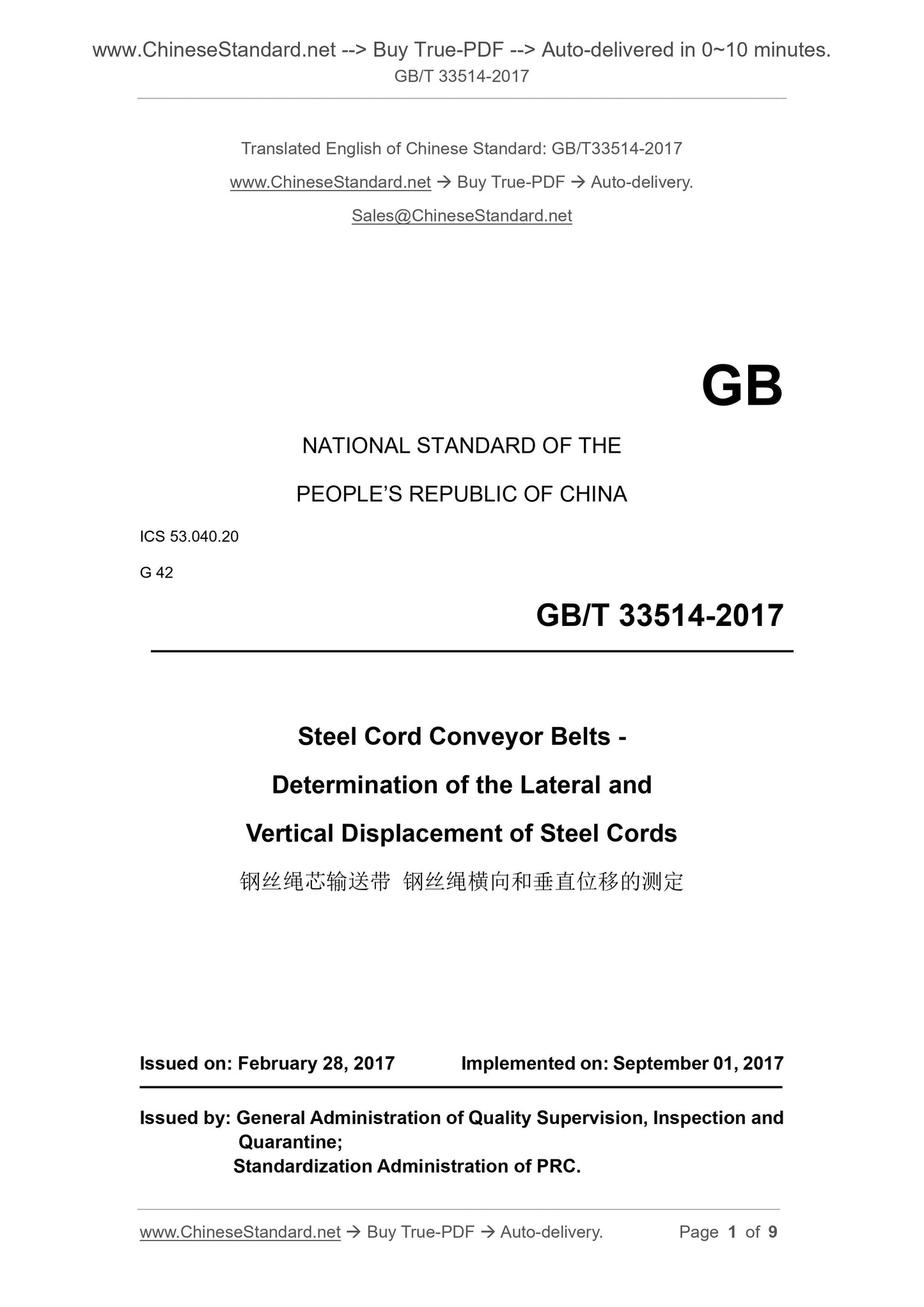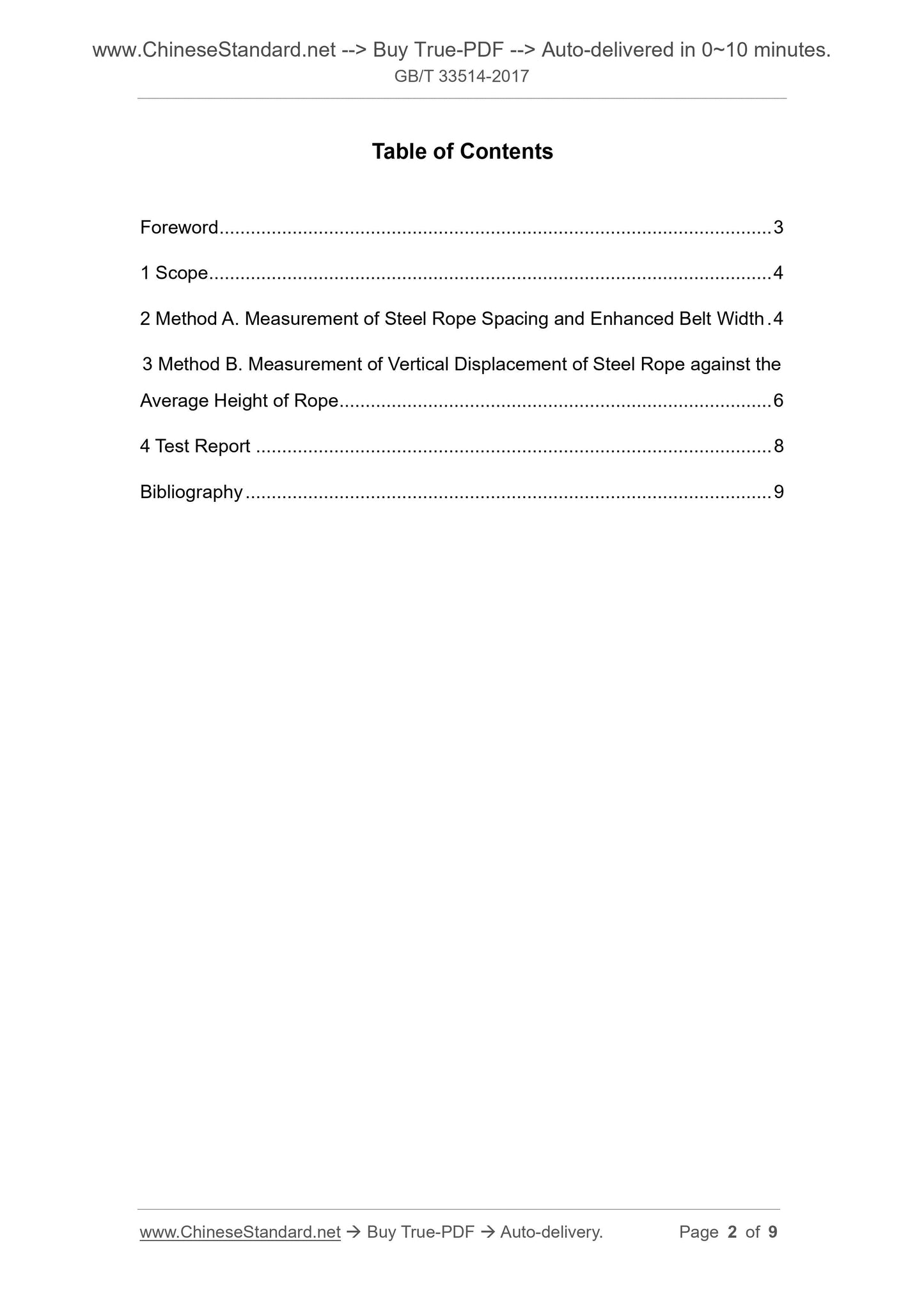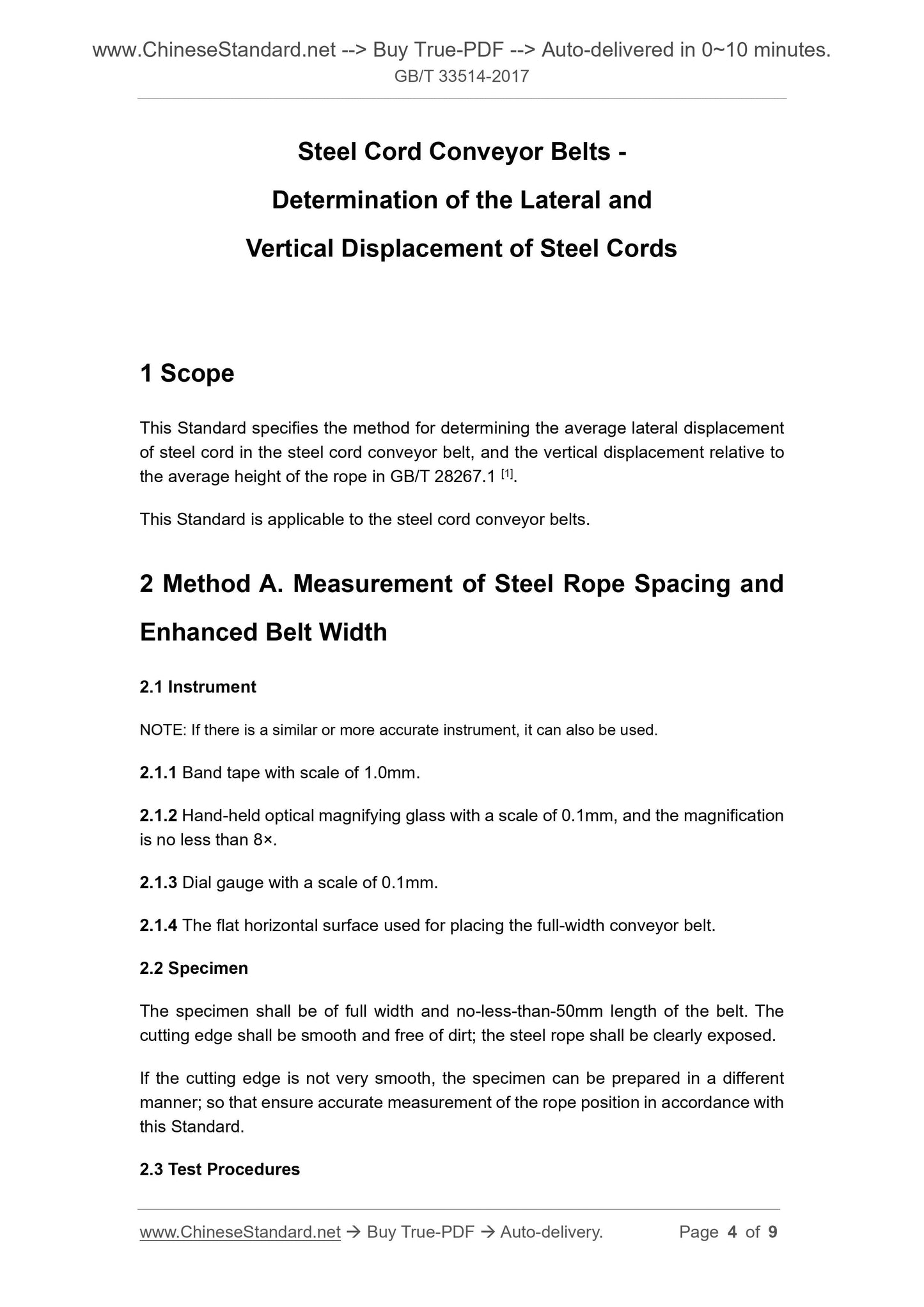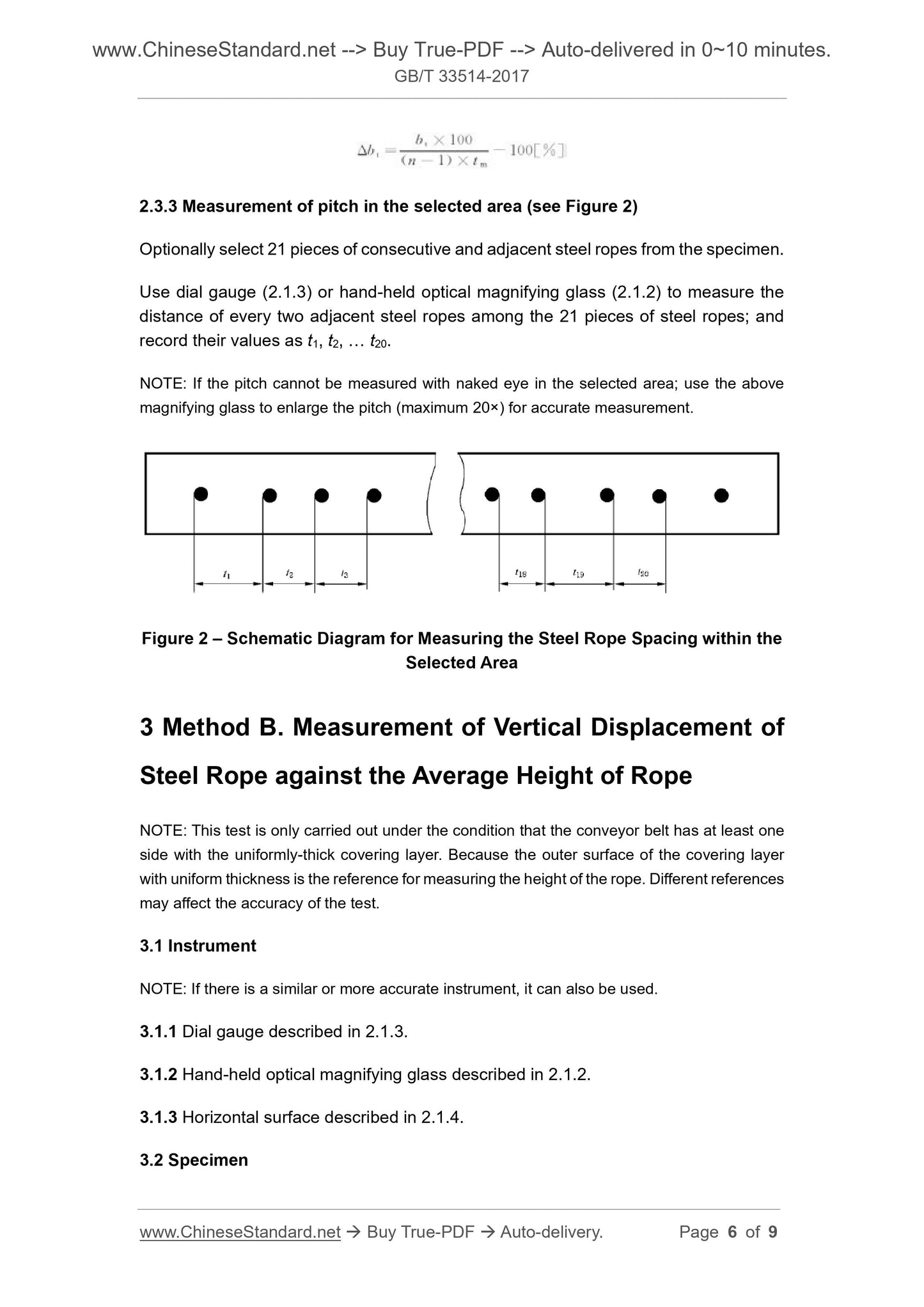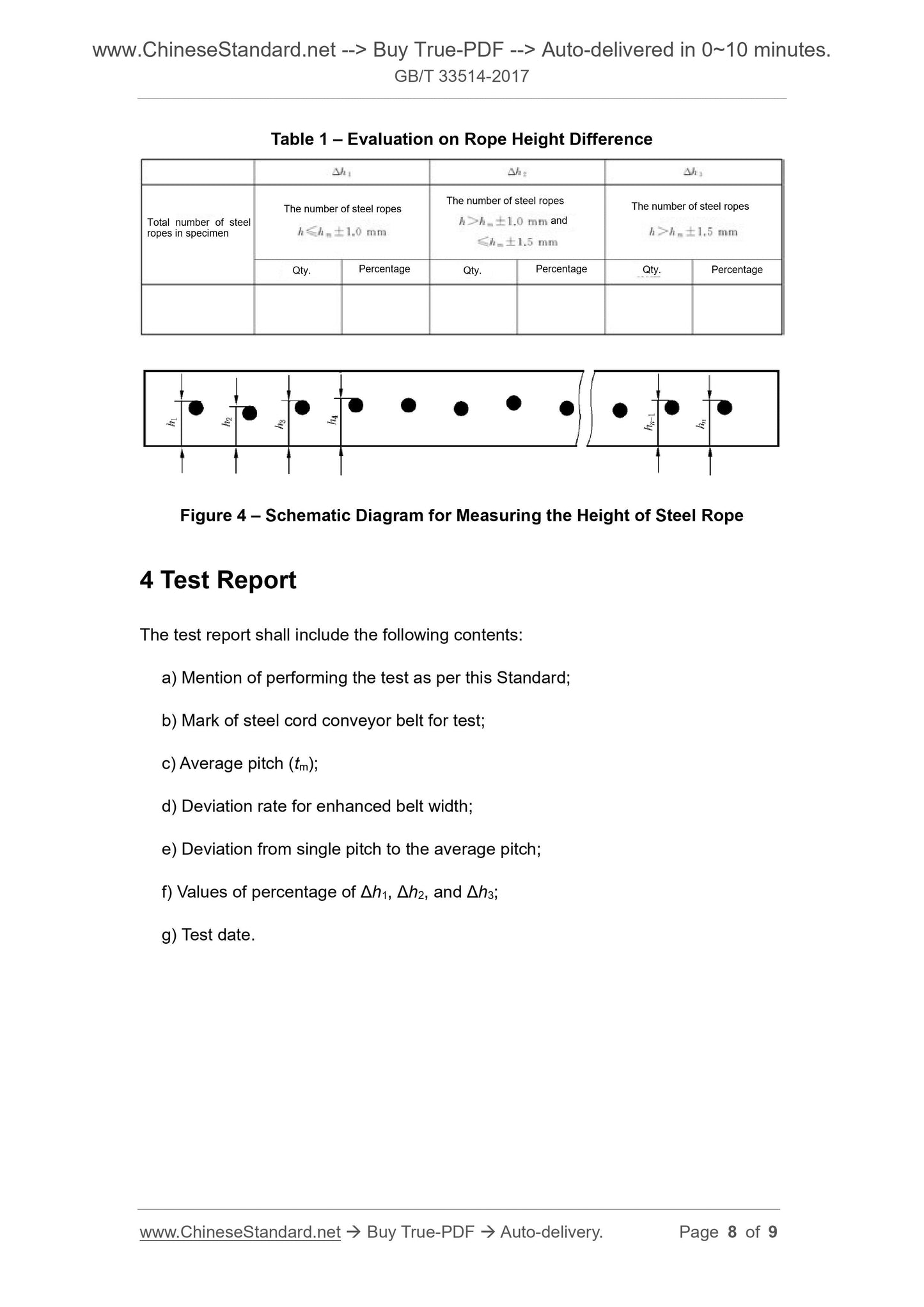1
/
of
5
www.ChineseStandard.us -- Field Test Asia Pte. Ltd.
GB/T 33514-2017 English PDF (GB/T33514-2017)
GB/T 33514-2017 English PDF (GB/T33514-2017)
Regular price
$120.00
Regular price
Sale price
$120.00
Unit price
/
per
Shipping calculated at checkout.
Couldn't load pickup availability
GB/T 33514-2017: Steel cord conveyor belts -- Determination of the lateral and vertical displacement of steel cords
Delivery: 9 seconds. Download (and Email) true-PDF + Invoice.Get Quotation: Click GB/T 33514-2017 (Self-service in 1-minute)
Newer / historical versions: GB/T 33514-2017
Preview True-PDF
Scope
This Standard specifies the method for determining the average lateral displacementof steel cord in the steel cord conveyor belt, and the vertical displacement relative to
the average height of the rope in GB/T 28267.1 [1].
This Standard is applicable to the steel cord conveyor belts.
2 Method A. Measurement of Steel Rope Spacing and
Enhanced Belt Width
2.1 Instrument
NOTE. If there is a similar or more accurate instrument, it can also be used.
2.1.1 Band tape with scale of 1.0mm.
2.1.2 Hand-held optical magnifying glass with a scale of 0.1mm, and the magnification
is no less than 8×.
2.1.3 Dial gauge with a scale of 0.1mm.
2.1.4 The flat horizontal surface used for placing the full-width conveyor belt.
2.2 Specimen
The specimen shall be of full width and no-less-than-50mm length of the belt. The
cutting edge shall be smooth and free of dirt; the steel rope shall be clearly exposed.
If the cutting edge is not very smooth, the specimen can be prepared in a different
manner; so that ensure accurate measurement of the rope position in accordance with
this Standard.
2.3 Test Procedures
2.3.3 Measurement of pitch in the selected area (see Figure 2)
Optionally select 21 pieces of consecutive and adjacent steel ropes from the specimen.
Use dial gauge (2.1.3) or hand-held optical magnifying glass (2.1.2) to measure the
distance of every two adjacent steel ropes among the 21 pieces of steel ropes; and
record their values as t1, t2, ... t20.
NOTE. If the pitch cannot be measured with naked eye in the selected area; use the above
magnifying glass to enlarge the pitch (maximum 20×) for accurate measurement.
Figure 2 – Schematic Diagram for Measuring the Steel Rope Spacing within the
Selected Area
3 Method B. Measurement of Vertical Displacement of
Steel Rope against the Average Height of Rope
NOTE. This test is only carried out under the condition that the conveyor belt has at least one
side with the uniformly-thick covering layer. Because the outer surface of the covering layer
with uniform thickness is the reference for measuring the height of the rope. Different references
may affect the accuracy of the test.
3.1 Instrument
NOTE. If there is a similar or more accurate instrument, it can also be used.
3.1.1 Dial gauge described in 2.1.3.
3.1.2 Hand-held optical magnifying glass described in 2.1.2.
3.1.3 Horizontal surface described in 2.1.4.
3.2 Specimen
Table 1 – Evaluation on Rope Height Difference
Figure 4 – Schematic Diagram for Measuring the Height of Steel Rope
Basic Data
| Standard ID | GB/T 33514-2017 (GB/T33514-2017) |
| Description (Translated English) | Steel cord conveyor belts -- Determination of the lateral and vertical displacement of steel cords |
| Sector / Industry | National Standard (Recommended) |
| Classification of Chinese Standard | G42 |
| Classification of International Standard | 53.040.20 |
| Word Count Estimation | 7,731 |
| Date of Issue | 2017-02-28 |
| Date of Implementation | 2017-09-01 |
| Regulation (derived from) | National Standard Announcement No. 4 of 2017 |
| Issuing agency(ies) | General Administration of Quality Supervision, Inspection and Quarantine of the People's Republic of China, Standardization Administration of the People's Republic of China |
| Summary | This standard specifies the method of determining the average lateral displacement of the wire rope in the steel cord conveyor belt and the vertical displacement relative to the average height of the rope in GB/T 28267.1 ^ [1]. This standard applies to steel cord conveyor belt. |
Share
